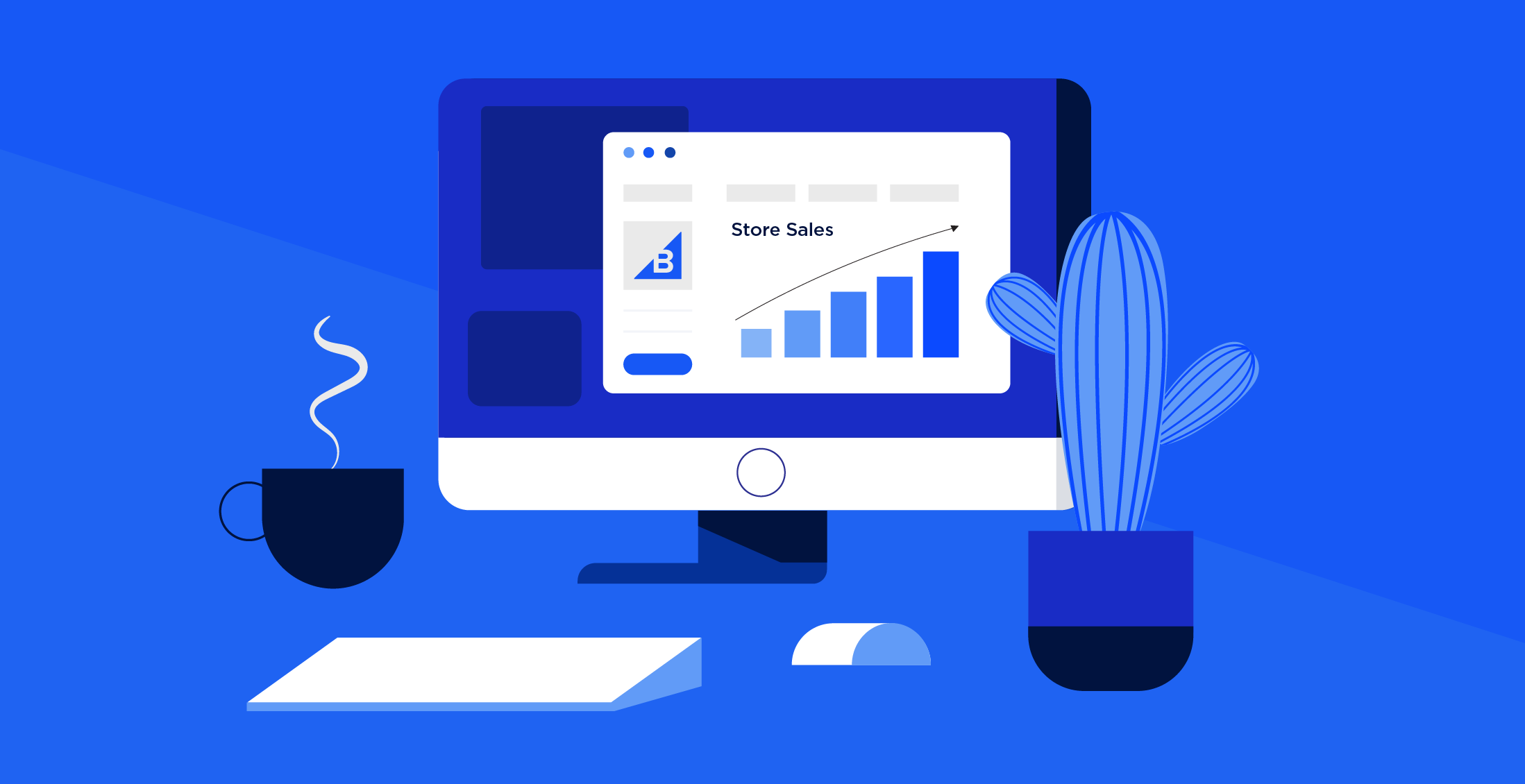- Enterprise
- Essentials
Using Ecommerce PIM to Centralize Data and Transform Your Business

Product information management (PIM) is something ecommerce businesses have implemented worldwide — and it is only growing.
According to research by AlliedMarketResearch, the global PIM market size was valued at $9.90 billion in 2019 and is projected to reach $59.25 billion by 2027, growing at a CAGR of 25.2% from 2020 to 2027.

As your company scales, you’ll need something more sophisticated to be sure you’re offering the best user experience possible.
Today’s product information management software collects, manages, enriches and distributes product information across distribution channels, from your ecommerce storefront to social sales channels, marketplaces and even advertising networks.
A PIM can become your single source of product truth by acting as a central hub for your product content management, then syncing it across your tech stack — ecommerce platform, ERP, OMS and other third-party integrations.
The Growing Need to Use a PIM
Scaling your business can be challenging, but it’s the challenge everyone embarking on an ecommerce journey wants to tackle.
One thing to watch out for as you scale is the potential for product information to become incorrect, out of date or stored in disparate places.
Over time things like item numbers, references, catalogs, SKUs, images and videos, translations, localizations, documentation, custom attributes and more can become impossible to manage.
Once your data quality falters, it’s tough to clean it all up. Discrepancies arise, workarounds are implemented and workflows begin to slow. Mid-market and enterprise organizations with large, complex product catalogs are particularly at risk as they rapidly add and edit volumes of products across multiple channels.
Once other factors are added, like trying to manage multiple price lists, geographic locations, languages, currencies, promotions, etc., you may see some of the following:
- Error-prone and inaccurate product launches or updates.
- Erroneous orders and increased returns, impacting the bottom line.
- Inefficient business processes, leading to higher costs.
- Increased customer dissatisfaction due to incomplete, out-of-date or inconsistent data across channels.
- Depleted or overstocked inventory.
- Ineffective product branding and merchandising.
To effectively communicate the value of your products to your customers, your product information has to be accurate and consistent across channels, including detailed descriptions and high-quality images.
As you scale, you’ll have more data to manage — and that means the Excel spreadsheet that worked in your early days will no longer be sufficient.
When you have every back-office system in sync, they’ll be able to manage product details, run targeted marketing campaigns and expand to new sales channels.
PIMs Collect Various Types of Data
PIM solutions collect more types of product data than you may even know. They can be super flexible for ecommerce so that you can maintain your single source of product truth.
Here are some of the types of data that will likely end up stored in your PIM:
Media files.
In the digital world, digital assets are increasingly critical for the success of any ecommerce site.
With a PIM, the organization of your digital assets is simplified and streamlined. Here, you’ll keep all your product images, gifs, videos, 3D renderings or any other media file you use to enhance your product descriptions.
These will not all surface in each sales or marketing channel — you’ll choose what works best for which channel.
Product usage data.
Provide complete descriptions of how shoppers are meant to use your product. You might even be able to suggest additional use cases, making the product a better investment for your shoppers.
You’ll see something similar on just about any blender product description — perhaps, so shoppers think bigger than just smoothies or milkshakes as they’re considering their purchase.
LARQ uses their product pages to make sure shoppers know their bottles work with warm or cold liquids:

Emotional data.
You can use product stories and more emotional language to create an emotional connection into your customer experience. The best way to describe this is to show an example. Solo Stove does a great job of bringing the shopper into the narrative. In the first two paragraphs, the copy provokes powerful images of adventure and warmth.

Important Product Information Management Features
While evaluating potential PIM systems, you’ll want to cover a few details with each vendor to make a complete comparison based on your needs.
- How has their product evolved over time, and what features and functionality do they see coming from the product roadmap?
- How easy is the onboarding and implementation process? How long does it take? What is the time to market?
- How does their product integrate with their partner network? Are integrations and optimizations pre-built, or will you need a developer to manage them? Are they open-source?
- Does data sync in real-time?
- Does the vendor have limitations around the number of sales channels, languages, currencies or storefronts?
- How do they source their product information? Are they compatible with your product provider(s)?
- If you have to tap into multiple manufacturers’ feeds, will you incur additional costs?
Of course, there is the standard feature list.
When researching and working on selecting a PIM, we strongly recommend using the following feature list as a baseline for comparison:
- Integration Platform as a Service (iPaaS).
- Data Modeling, Normalization and Conversion.
- Advanced Merchandising and Search Tools.
- Bulk Product Editing.
- Advanced Pricing Rules.
- Secure Data Backups.
- Static Content Scheduling.
- Variant Products and Bundled Products.
- Multi-Language and Multi-Currency Support.
- Digital Asset Management (DAM).
- Google Merchant Center Publication.
- Custom Product Readiness Status States.
- Readiness State Change Events.
- Easy-Build Custom Product Attributes.
- Ecommerce Platform Publication.
- Legacy Data Conversion.
- Cross Channel Inventory Synchronization.
- Enterprise Resource Management (ERP) Integration.
- Customer Relationship Management (CRM) Integration.
- Shipping and Fulfillment Integration.
- Product Feeds and Electronic Data Interchange (EDI).
- Sitemap Generation.
- REST API.
- Custom API Endpoints.
- Third-Party Marketplace Publication.
- Live Online Training Sessions.
- Order Management Integration.
- User Permissions and Roles Settings.
- Advanced Pricing Engine.
- Smart Categories.
- Custom Business Objects.
Advantages of Implementing a PIM
Shoppers today look all over for the best deals as there are many more opportunities than there used to be for product research.
According to a Statista report, the top destination for online shoppers to search for inspiration is Amazon. Thus, it behooves retailers to have consistent product information across all touchpoints within the service.
It’s also a boon to your back-office through data governance, as it provides advantages through standardization of product data and streamlined processes of distributing it across channels.
Reduced manual data entry.
A PIM reduces manual data entry by taking in data from other systems, then pushing out product information to your ecommerce store and online sales channels. This means you only have to enter information once, reducing the potential for data entry errors or inconsistencies.
Plus, when you change or update product information, you’ll only have to do it once — and that change will be synced across all your channels and systems.
With a full-featured PIM system, you can potentially reduce your workload by a significant amount, letting you spend more time on the creative parts of your product presence.
Precise information.
Pull data and information about your products directly from your suppliers’ databases.
You’ll need to make some edits to descriptions, headlines and product titles to make them more emotionally compelling, but having the technical info straight from the data source will reduce error and inconsistency that can harm the customer’s product experience.
Additionally, accurate product information can lead to fewer returns, saving your time and money on unneeded expenses.
Central database.
With just one central database, you have a single source of truth for product information. This is much simpler and easier to manage than maintaining multiple databases, especially when you need to make updates and changes.
All sales channels will source product info from the central location to ensure the latest and greatest product information is surfaced.
Scalability.
With a PIM, it will be much easier to scale your business. Without one, you’ll find yourself doing duplicative work, leading to data inconsistencies and errors. If you don’t have an efficient way to send accurate information across channels, you’ll be wasting time and money.
If you want to grow your business, it is critical to have a back-end infrastructure that can handle the increase.
Omnichannel efficiency.
The added scalability you’ll get through a solid PIM implementation will likely support your omnichannel and multichannel efforts.
When you can export product data easily to social channels, marketplaces and more, you can streamline expansion to new sales channels while ensuring all data is correct and consistent — reinforcing your strong brand across channels.
Improved marketing campaigns.
Marketing departments typically gain advantages from your PIM as well.
With a centralized database, they can tailor marketing campaigns quickly — based on all the latest product information — to meet the dynamic demand of omnichannel shopping.
Possible Disadvantages of Using a PIM
No software is one-size-fits-all, and it’s likely that no one software will be perfect for you either.
- Some product types require particular kinds of information, and you may find some PIM software more difficult to customize to account for the fields you need.
- There may be a learning curve, which could add time to the implementation process and potentially lead to low adoption.
- If you aren’t integrating your PIM with your ERP system, you won’t be able to leverage all the potential benefits of accurate inventory counts and sales reporting.
- Some have poor integrations, making it difficult to use with existing infrastructure.
- Many are designed for the enterprise, creating a higher barrier to entry for smaller businesses thanks to high prices and custom dev requirements.
There are always some disadvantages, but with the right understanding of the features and functionality you need, you can be confident that you’ll find one that can drastically improve your back-office operations.
When Does it Make Sense to Implement a PIM?
Organizations will benefit from better product data management as they expand globally, support multiple languages and currencies, and/or sell across marketplaces and social channels.
PIMs can be very beneficial even if you have only a few products, but those products have a high number of variables or customization options.
Best case scenario: you’re proactive, and you have a PIM implemented before you reach the point of your systems straining. Either way, the PIM could be worth it if you see issues.
Here are some things to consider as you start researching PIMs:
- The number of products you sell, and the complexity of the product information, like tech specs.
- Your roadmap for new product releases or development.
- The level of improvements you want to make to your product information, like enriching descriptions with multimedia or emotional copy.
- The time constraints you have in place may prevent you from giving the implementation process your full attention.
- How many channels you sell on now, and how many you have planned for the future as you scale.
- How much your business is growing right now, and how much you anticipate that growth to continue.
Choosing a PIM
Understanding the advantages of a PIM is one thing — selecting one for your business is another. When choosing a PIM, it is essential to ensure that it answers the following questions:
Does it integrate with your current systems?
PIM systems typically don’t work in isolation. If you’re planning on using a PIM, ensure that the solution you select can integrate seamlessly with your current systems.
Implemented correctly, a PIM can act as a central hub for all of your product data, across systems.
Is it built to accommodate growth?
If you’re a company that assumes future growth, then the solution you select should be scalable to match that. Many solutions may be suitable for your business now, but what about in five years? Ten years?
Thinking about scalability and growth capabilities before selecting a solution can save you headaches down the road.
Does it support multiple languages?
One of the most difficult challenges that face businesses working in information is multi-language support and organization. When choosing a PIM solution, it is important to ensure that it supports multiple languages, and can tailor content and data accordingly.
Maintaining data fidelity through multiple languages is already difficult – selecting the wrong PIM could only make it worse.
The Final Word
If you’re still thinking about sales channels as discrete or siloed, you may not have recognized the power of a product information management system. Or maybe you’re still a small business that hasn’t seen the need to leverage more technology or automation.
Ultimately, scaling into an omnichannel business without vastly increasing your labor costs or disappointing shoppers with inconsistent information can be a real challenge without better product information management.
A PIM — particularly when implemented in an integrated fashion into your ecommerce tech ecosystem — will reduce the need for manual data entry and ensure your ability to pull exact product information from a central database or master data management (MDM) platform. This integrated workflow will help you scale your omnichannel business through sales and marketing across channels.
Though there are always risks involved in implementing new technologies, there are many ways to mitigate them by doing your due diligence and research, both on your own business and any vendor you’re evaluating.
FAQs About Ecommerce PIMs
What’s the difference between an ERP and a PIM?
PIM stands for product information management, while ERP stands for enterprise resource planning. Although some people get ERPs and PIMs confused, they are partners in the workflow process, not duplicates.
Where PIMs centralize product information to distribute across other business apps, ERPs leverage the data received from PIMs and store it with operational data to improve and automate workflows.
If my spreadsheet is working for me now, why would I consider a PIM?
The quick answer? Scalability.
If you're a company that plans on future growth, then you know that eventually, spreadsheets simply won't be able to cut it.
As you scale, the chance for error will be much higher. A PIM can provide a centralized hub for your product information that connects with other systems.
What should my PIM integrate with?
Your PIM should integrate with all relevant parts of your tech stack, including:
- Ecommerce platforms.
- ERPs.
- Warehouse/POS systems.
- Procurement systems.
- Digital channels, both customer and internal.
- Any source systems.
By integrating your PIM with these systems, you can build an organizational platform that streamlines processes and makes the everyday lives of its users that much easier.
What are the risks of not having a PIM?
If you pull product data from disparate data sources, you risk pushing out incorrect or outdated data to one or more of your sales channels. This can create additional work for your team and is likely to lose you a sale or lead to a return.
You also may find that the work it takes to scale your business without a PIM is a more significant roadblock than you may expect.



